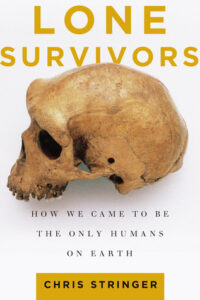 Lone Survivors: How We Came to Be the Only Humans on Earth, Chris Stringer
Lone Survivors: How We Came to Be the Only Humans on Earth, Chris Stringer
I’m a little baffled by those who say that this book is for the scientific community, because it so blatantly isn’t — it explains how DNA and various methods of dating work, for example, which definitely wouldn’t be required by someone with even baseline knowledge in the scientific community. (Including me. There was no single technique this book covered which I didn’t comprehend, and only one or two I wasn’t aware of specifically.) I think it can be a little bit dry — especially when it explains things like DNA being in a helix or mtDNA being transmitted only through the female line… And the structure could definitely use some help. While I can see that he’s trying to interrelate his chapters by saying “see chapter x”, it means that sometimes the significance of something isn’t as apparent as he thinks.
Overall, though, I found it pretty readable and unexceptionable: Stringer freely admits that he’s been wrong at times about the course of human development, and that we don’t have all the answers now. He’s respectful of ideas he disagrees with, and covers some of them well, including the evidence which does point in that direction. I’m surprised by how little evidence of hybridisation he sees; I thought hybridisation with Neanderthals and Denisovans was more of a foregone conclusion than it appears from Stringer’s analysis.
It’s slightly more up to date than the Homo Britannicus book by the same author, too. Of course, it covers worldwide human history in general, so it’s less limited, but it also includes stuff I missed in reading that book, like some discussions of the Denisovan caves and the remains discovered there.
All in all, a reasonably good read, though naturally in general drift it supports the author’s hypothesis of a Recent African Origin for H. sapiens.

Leave a Reply